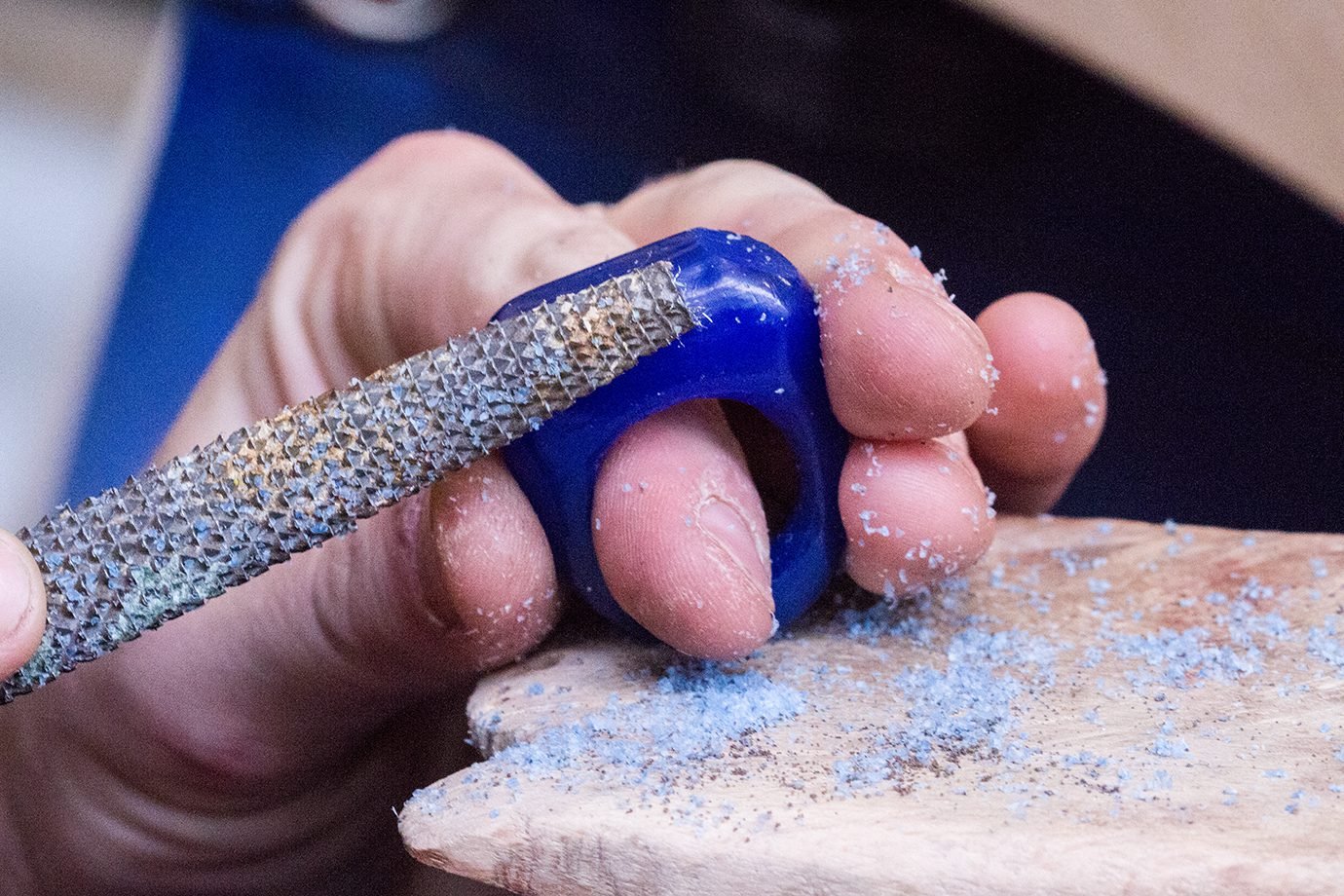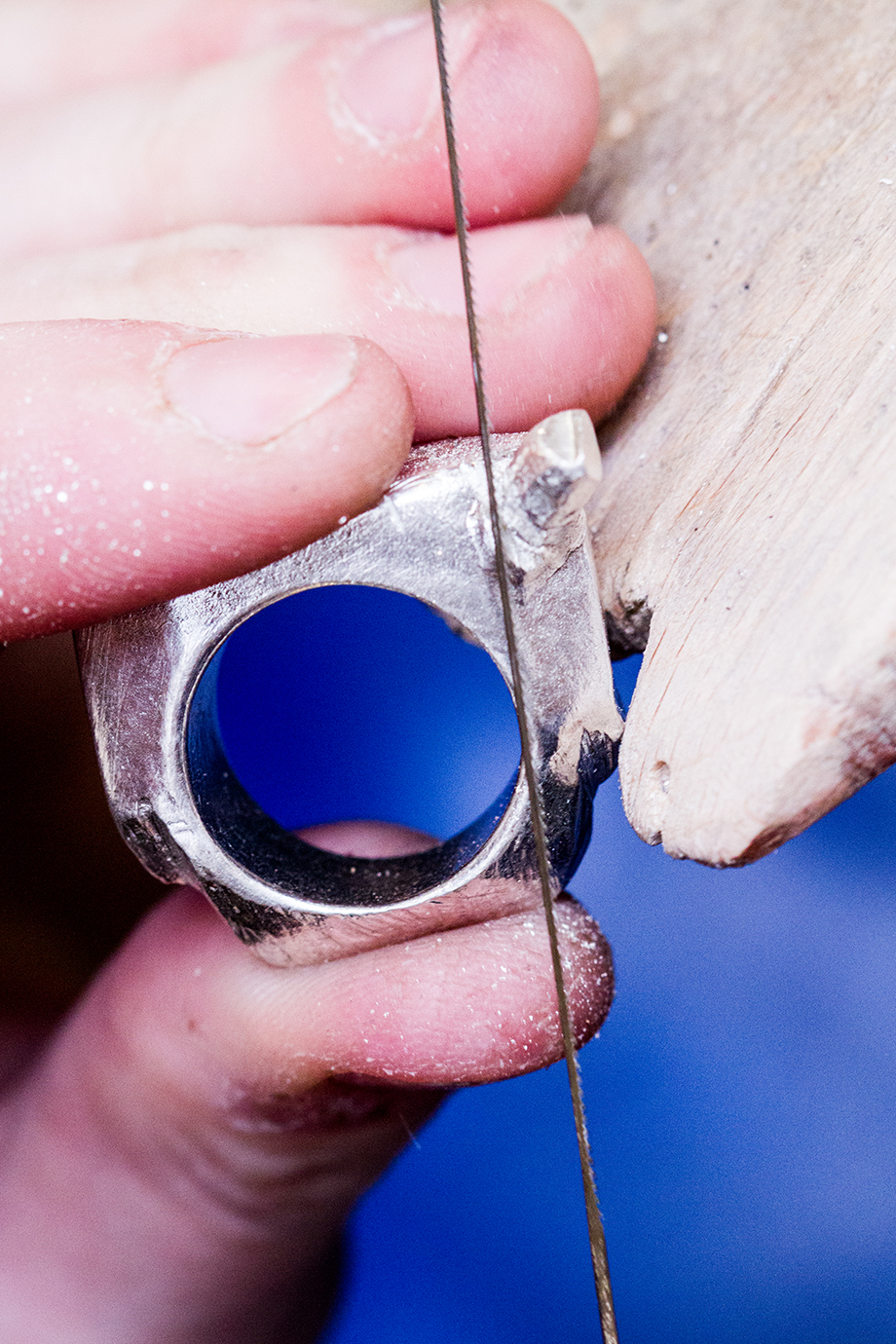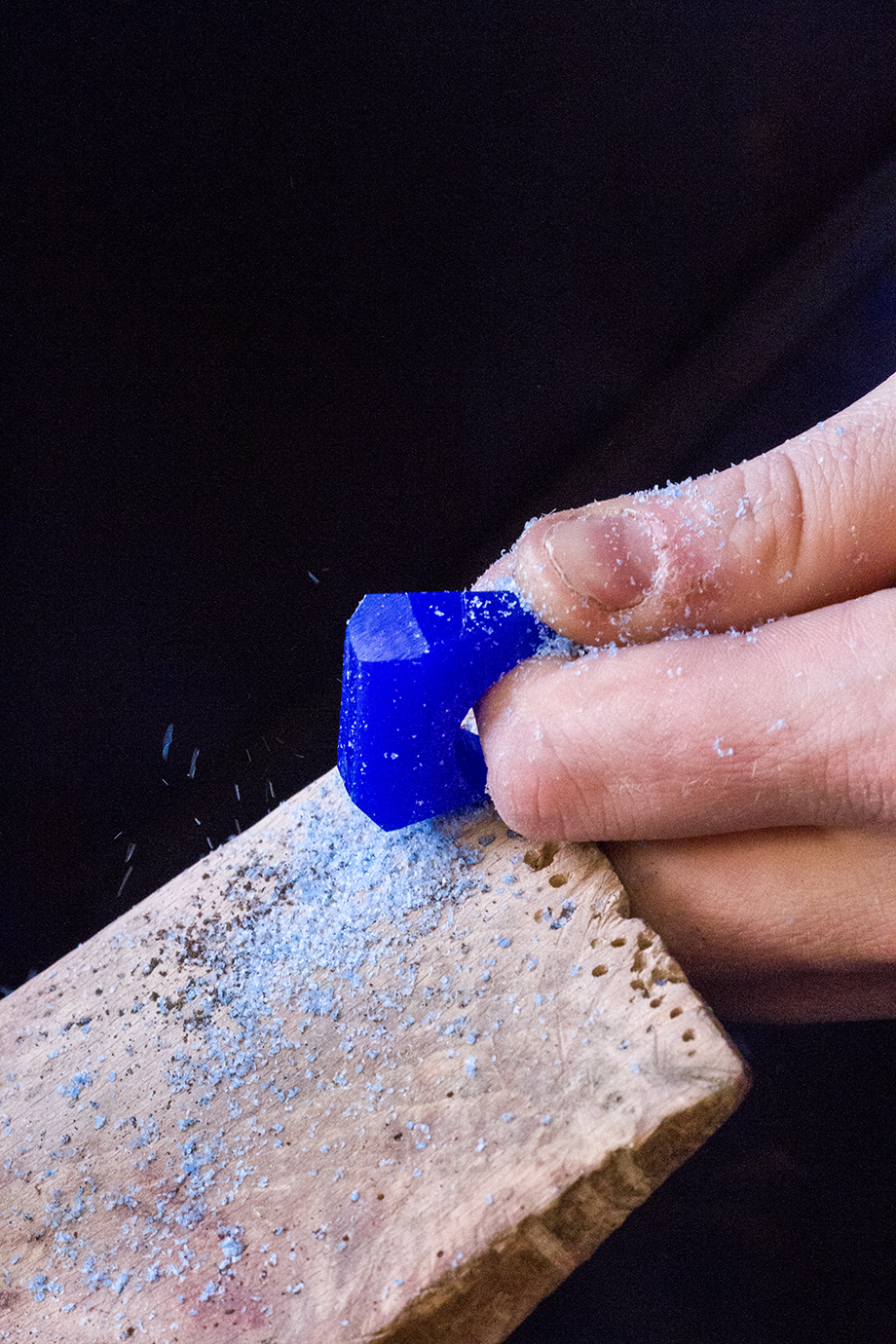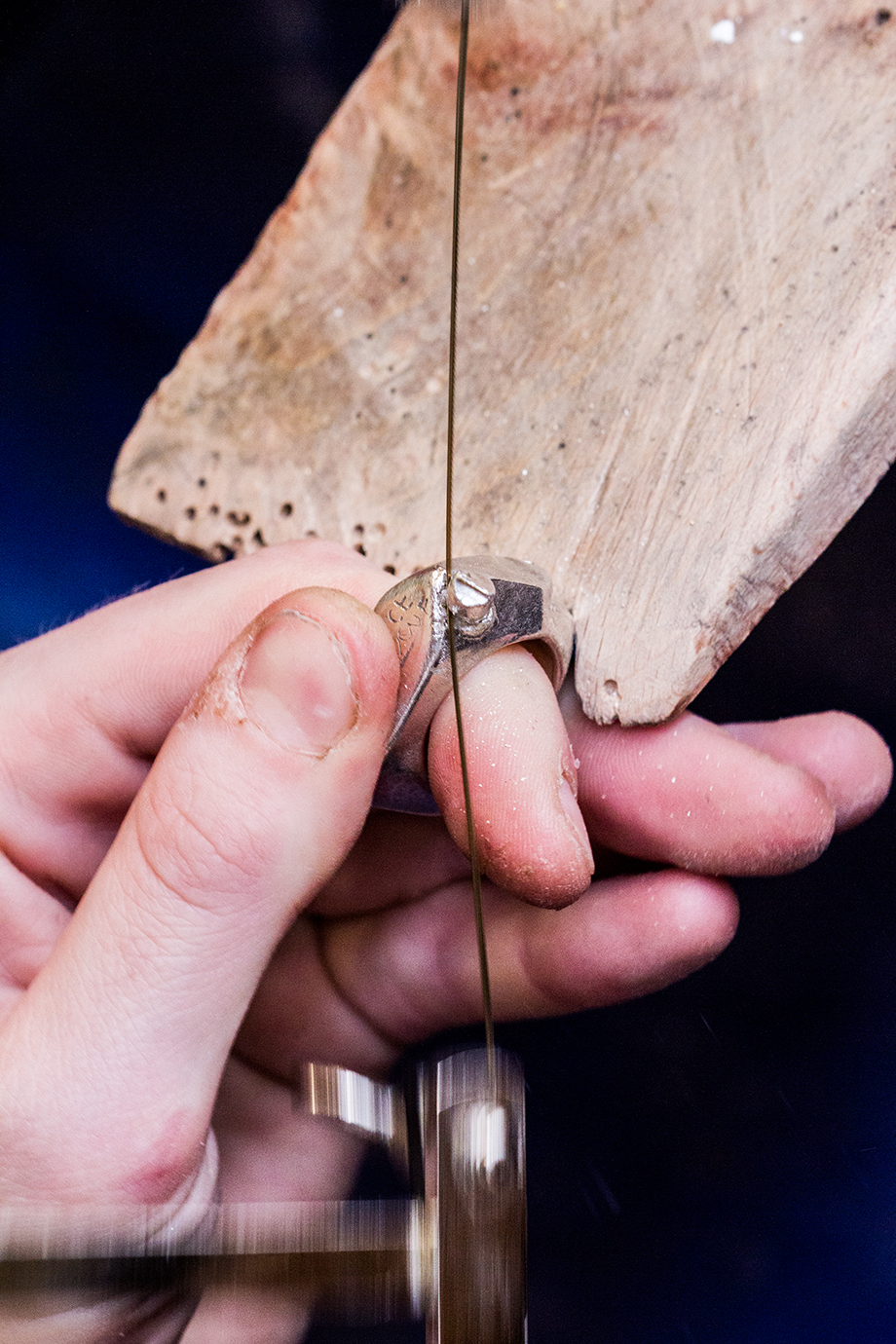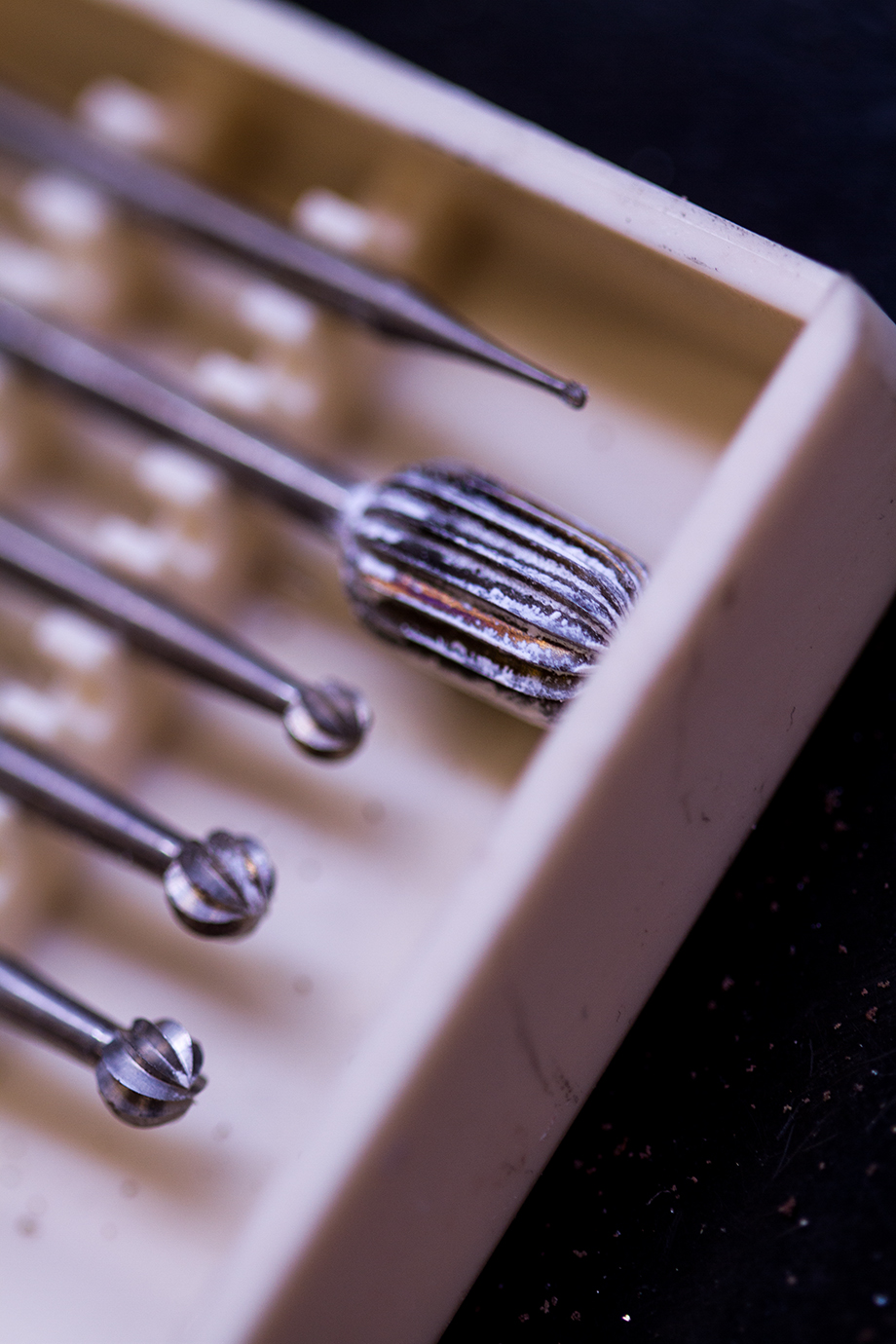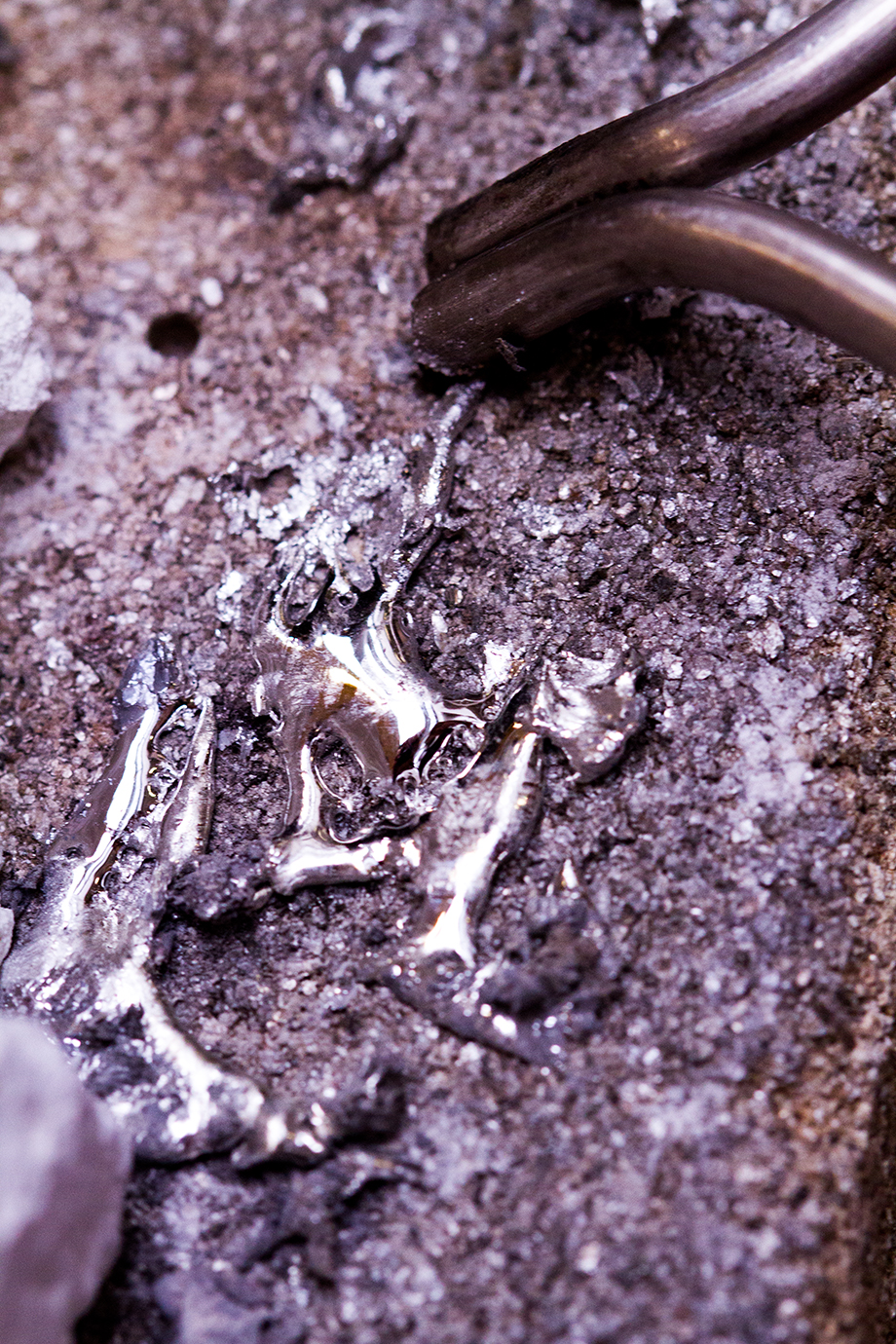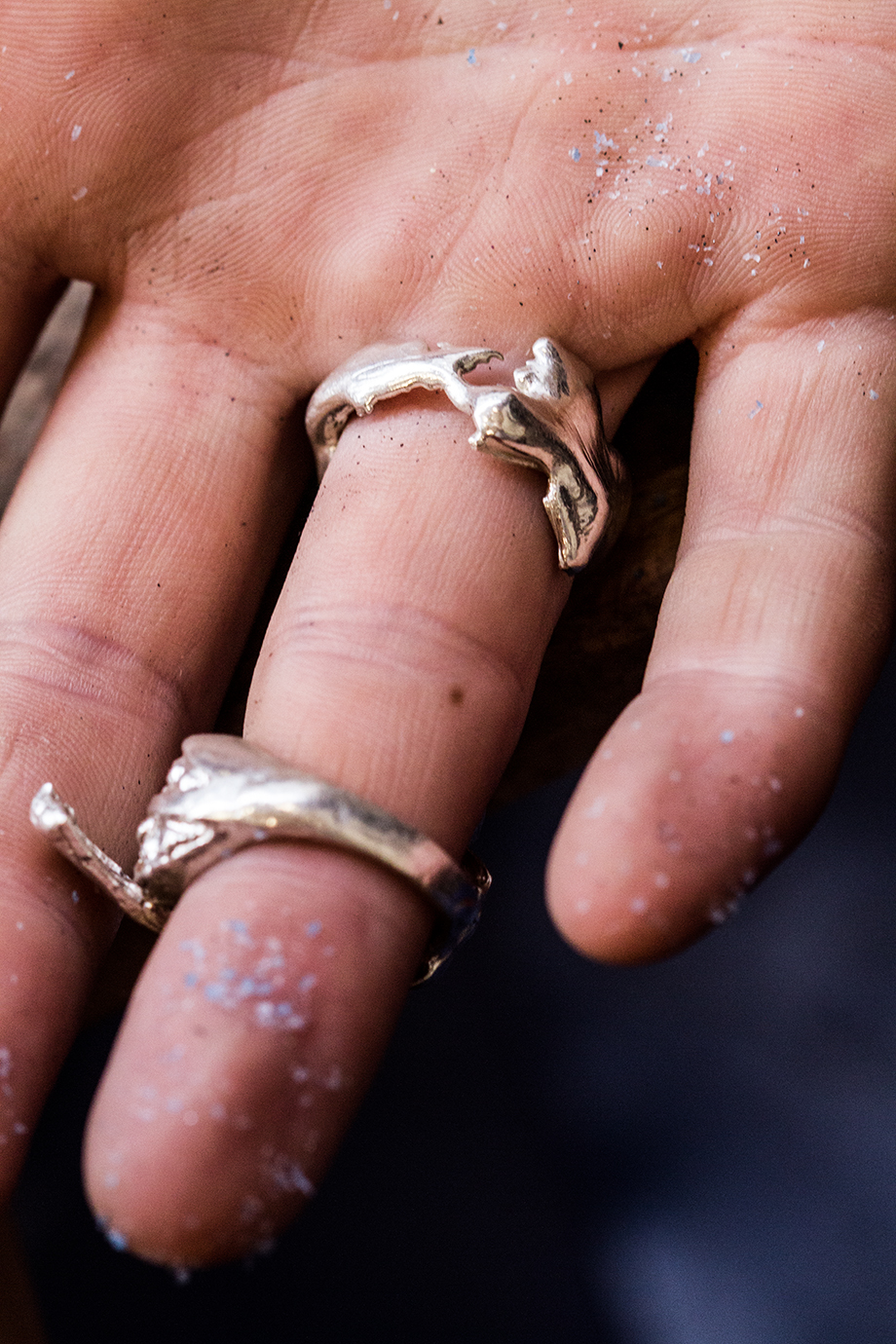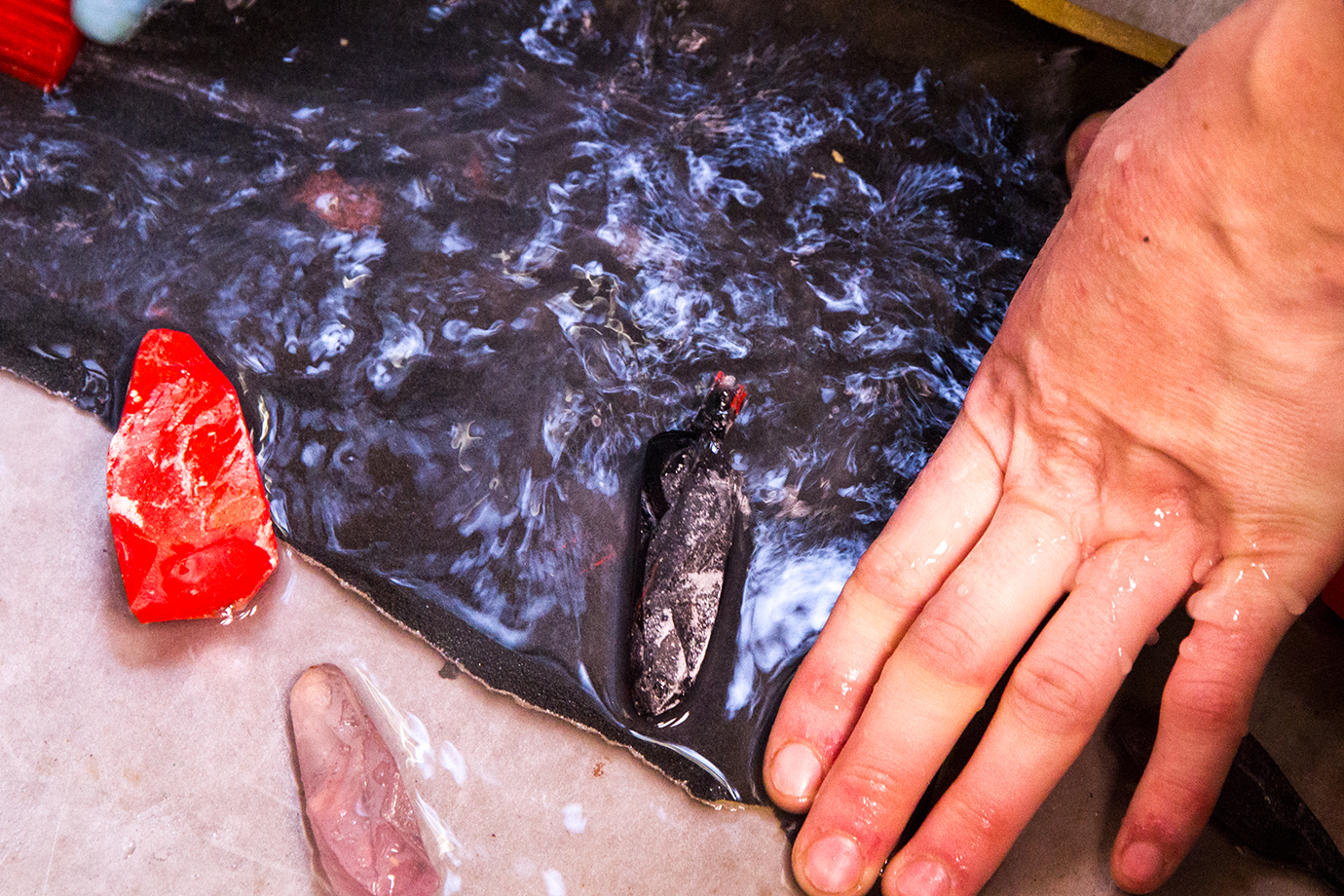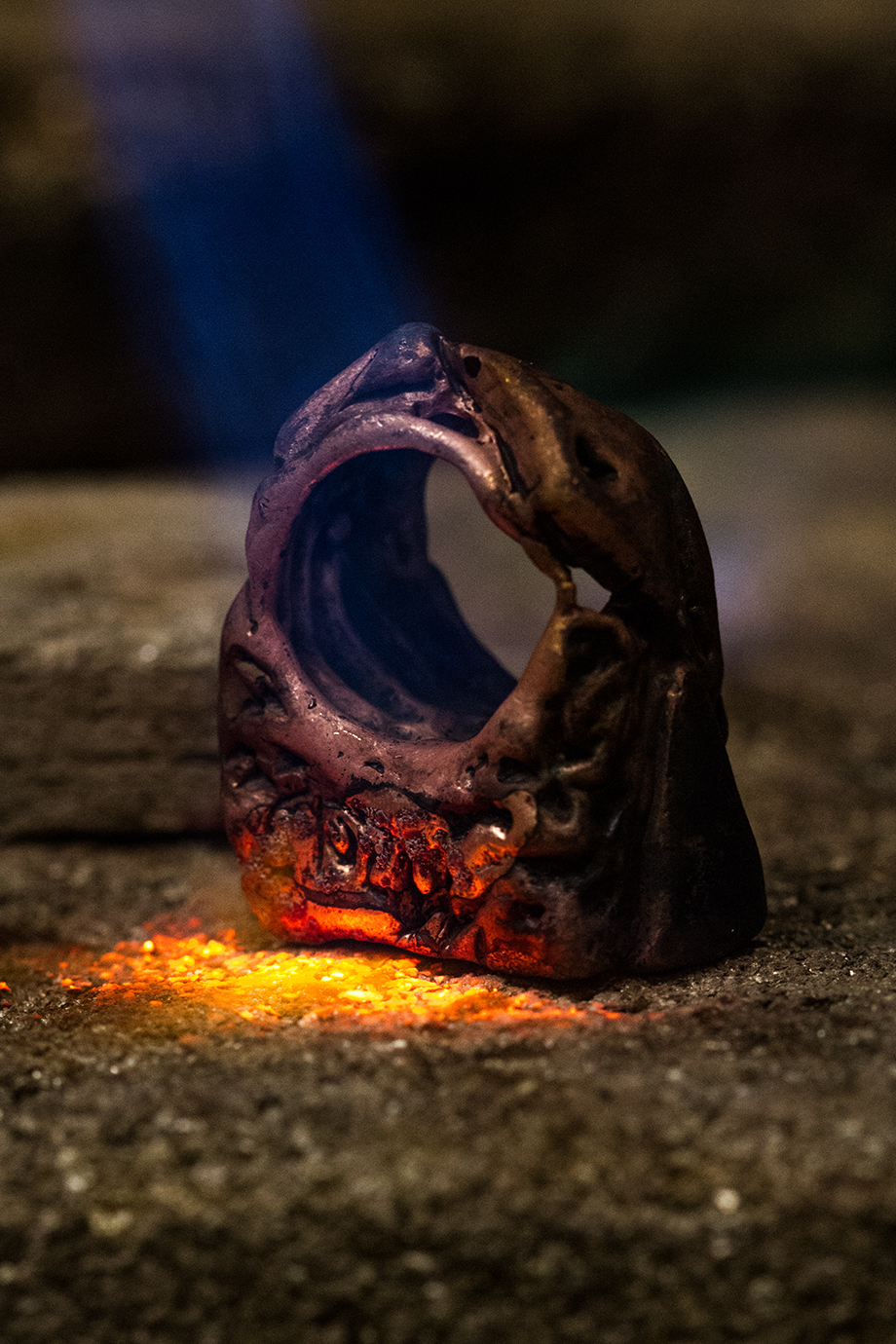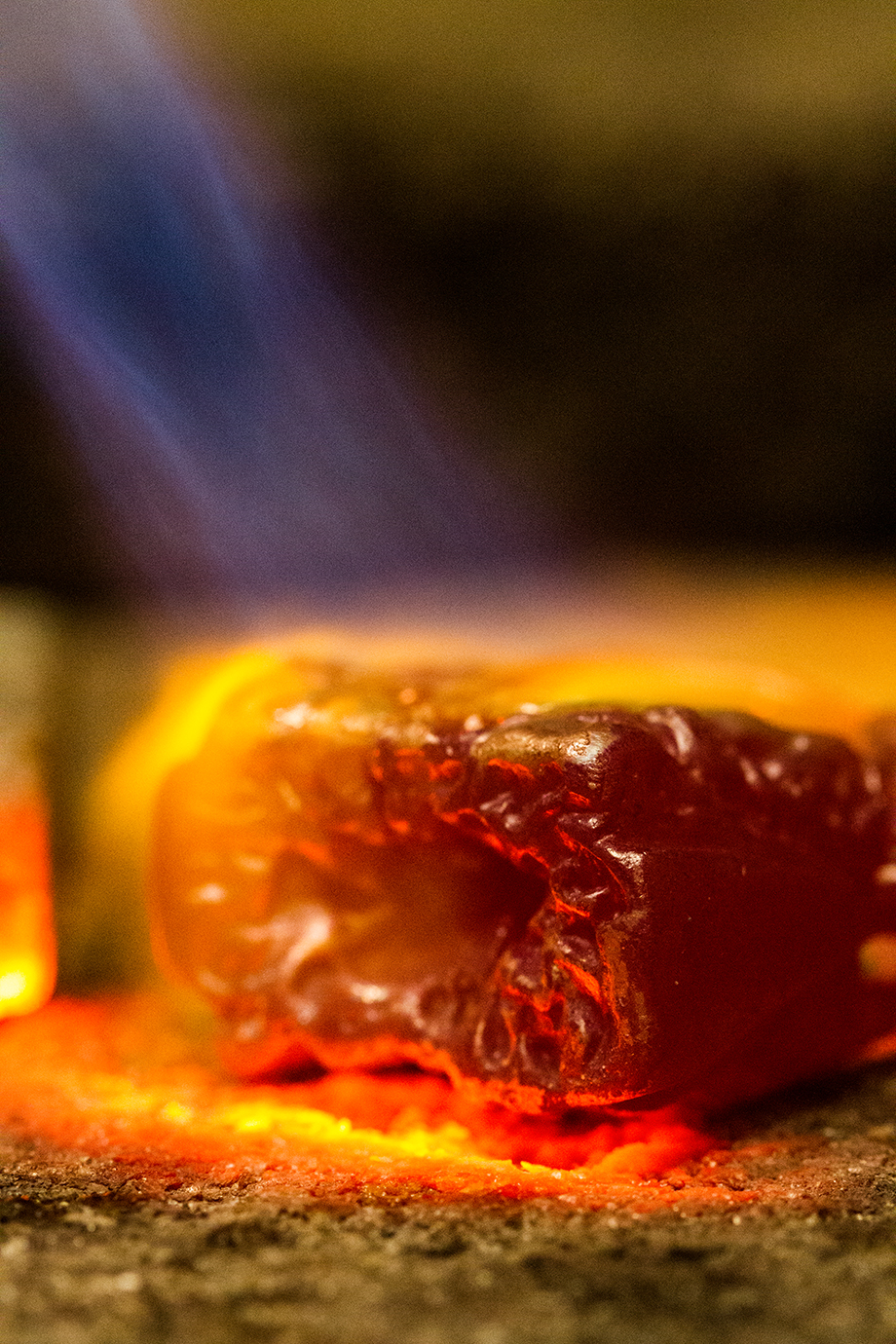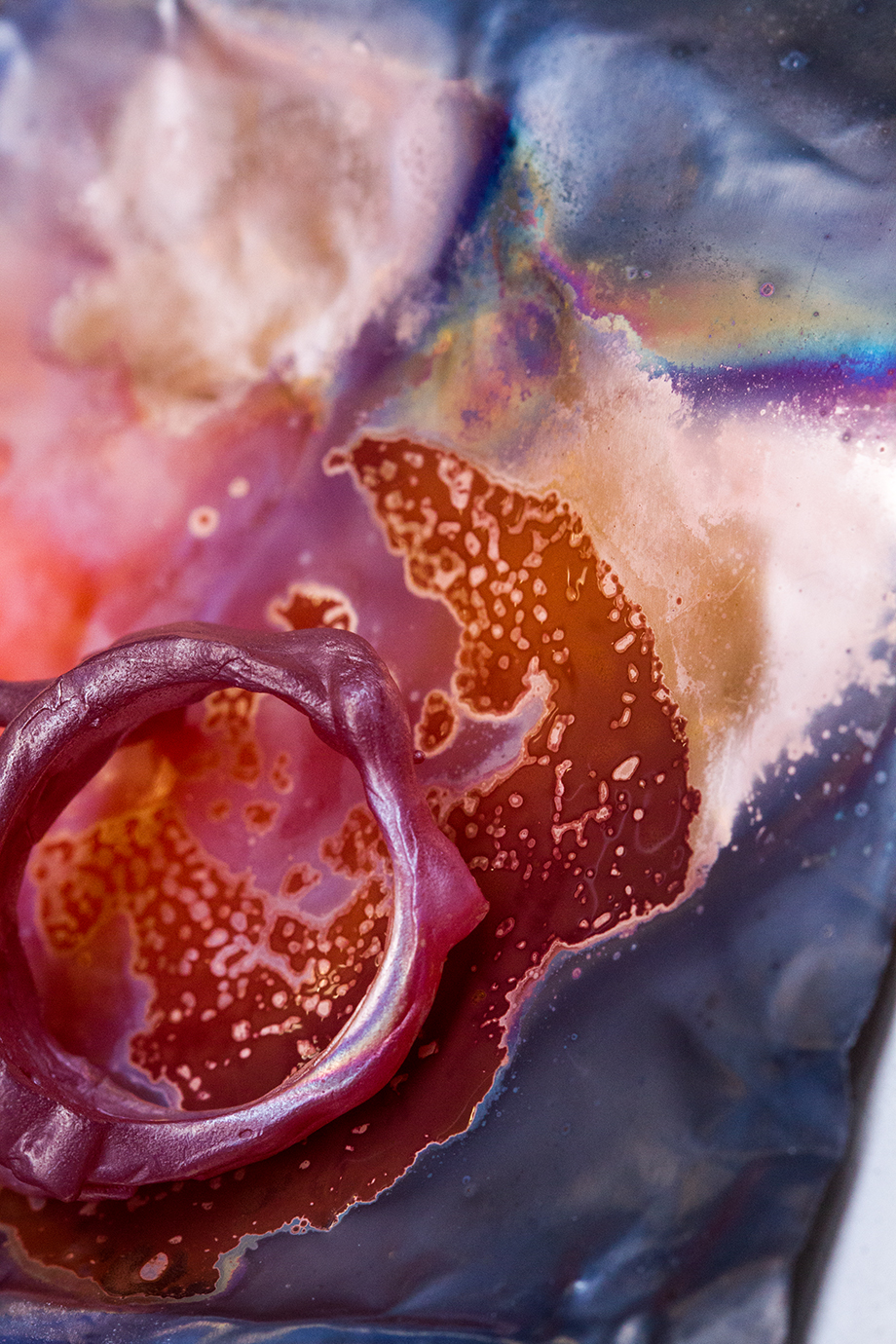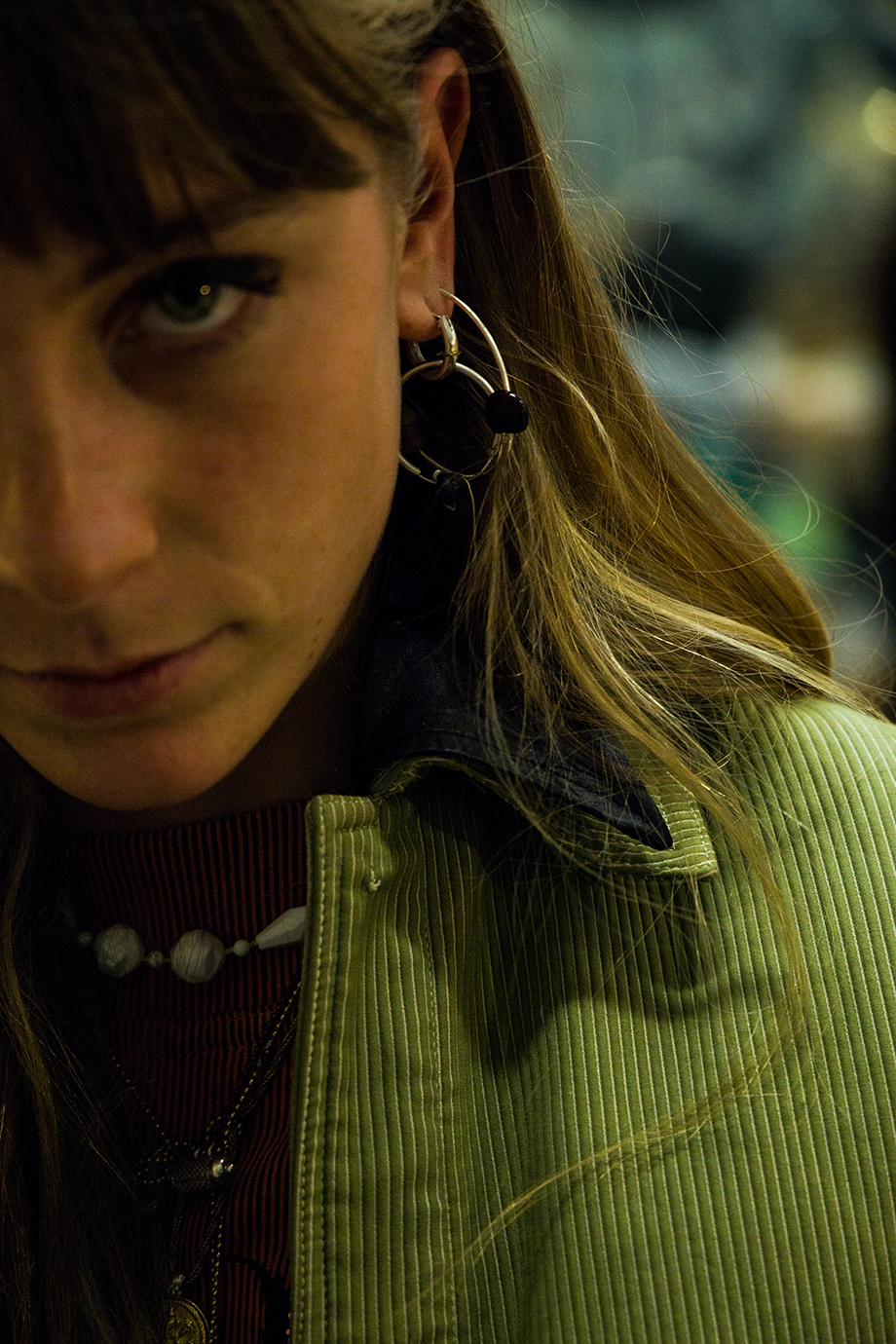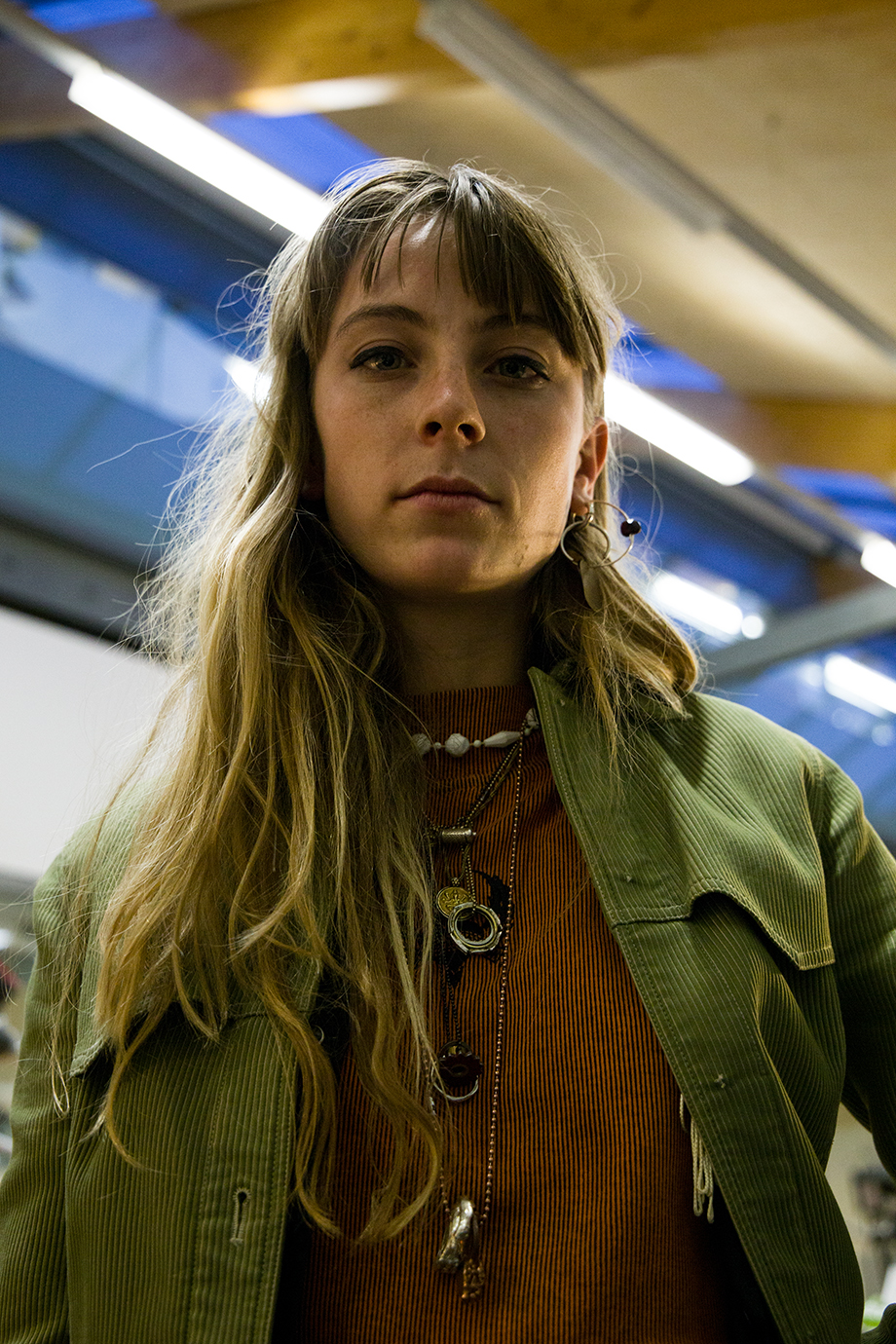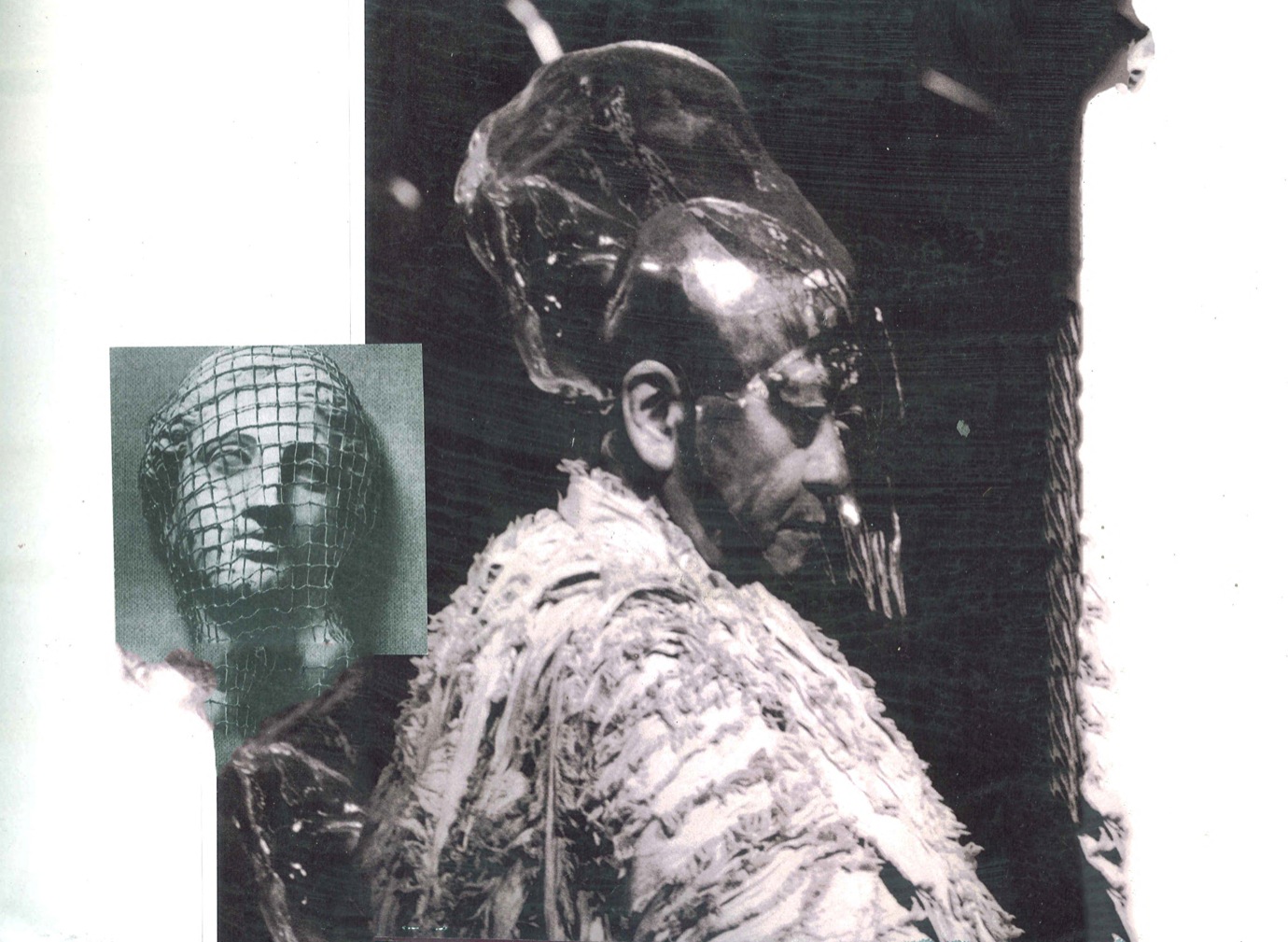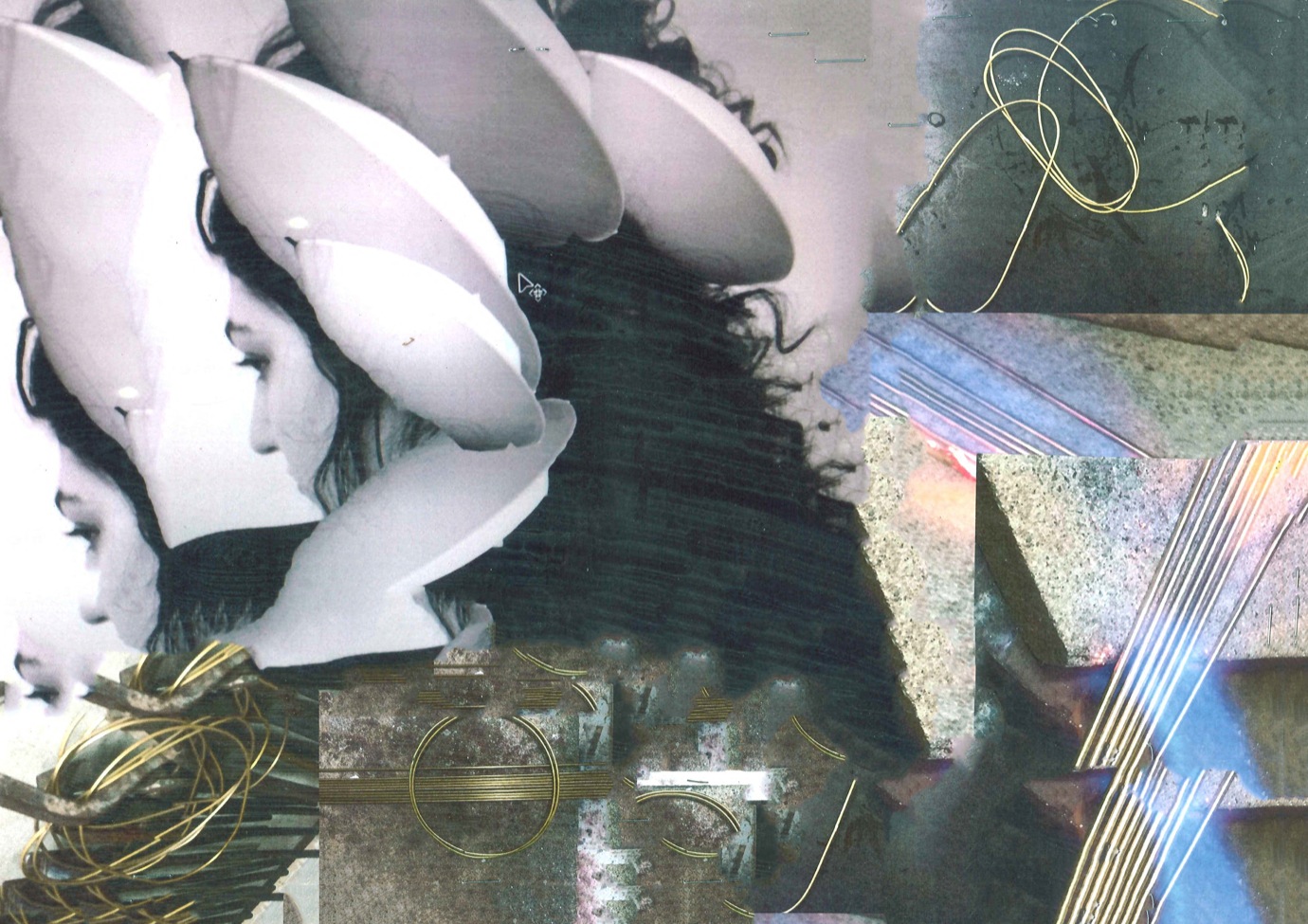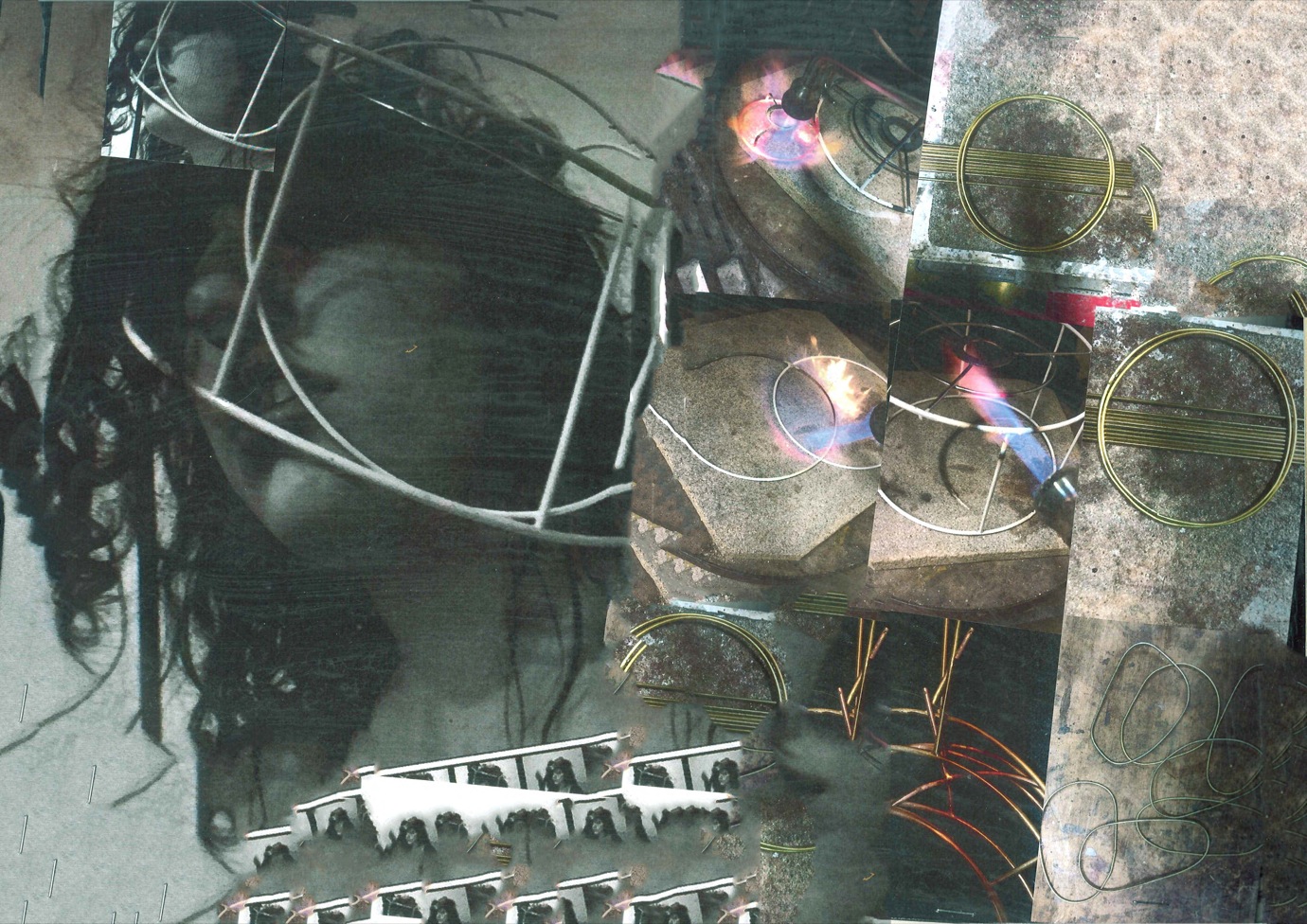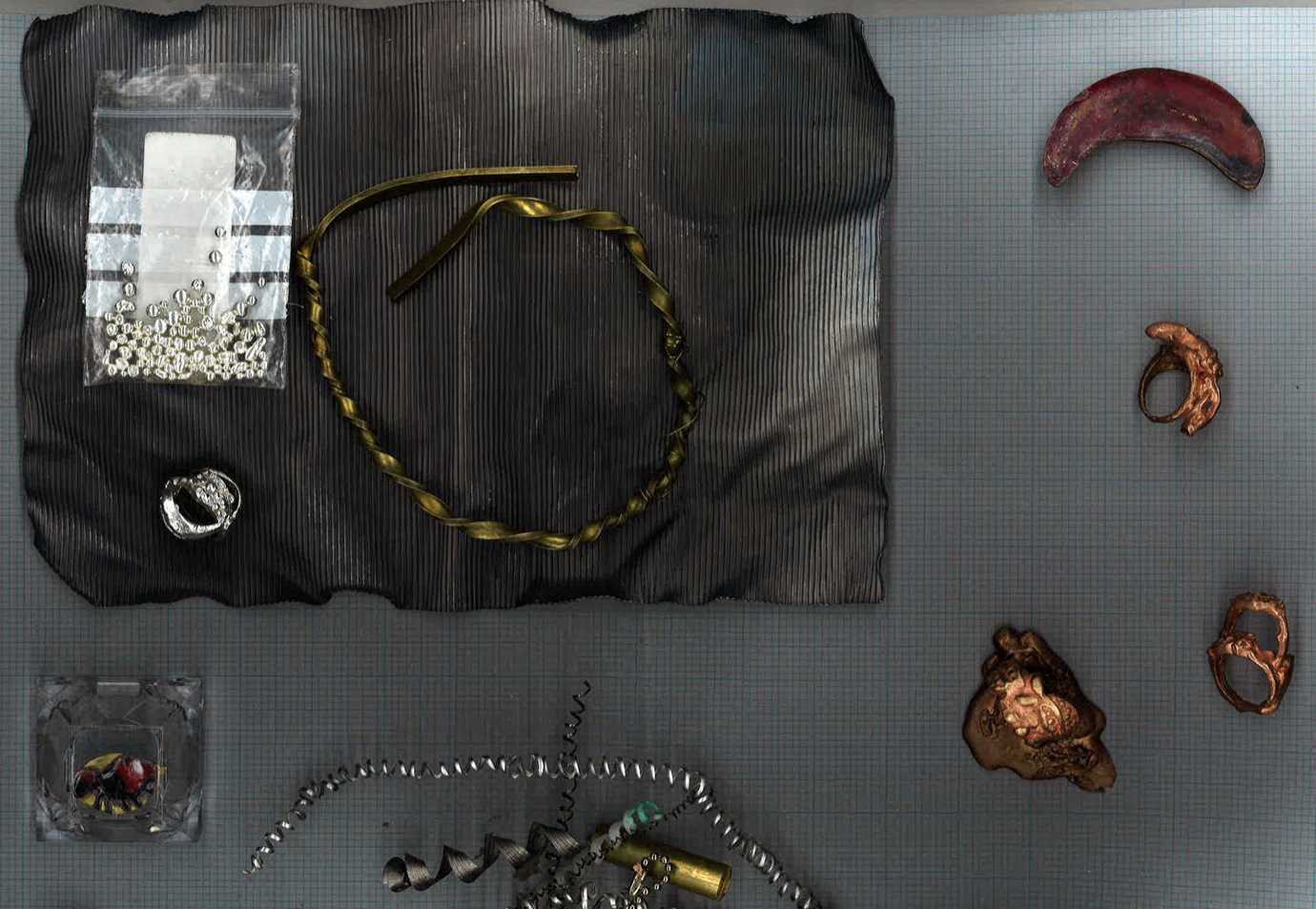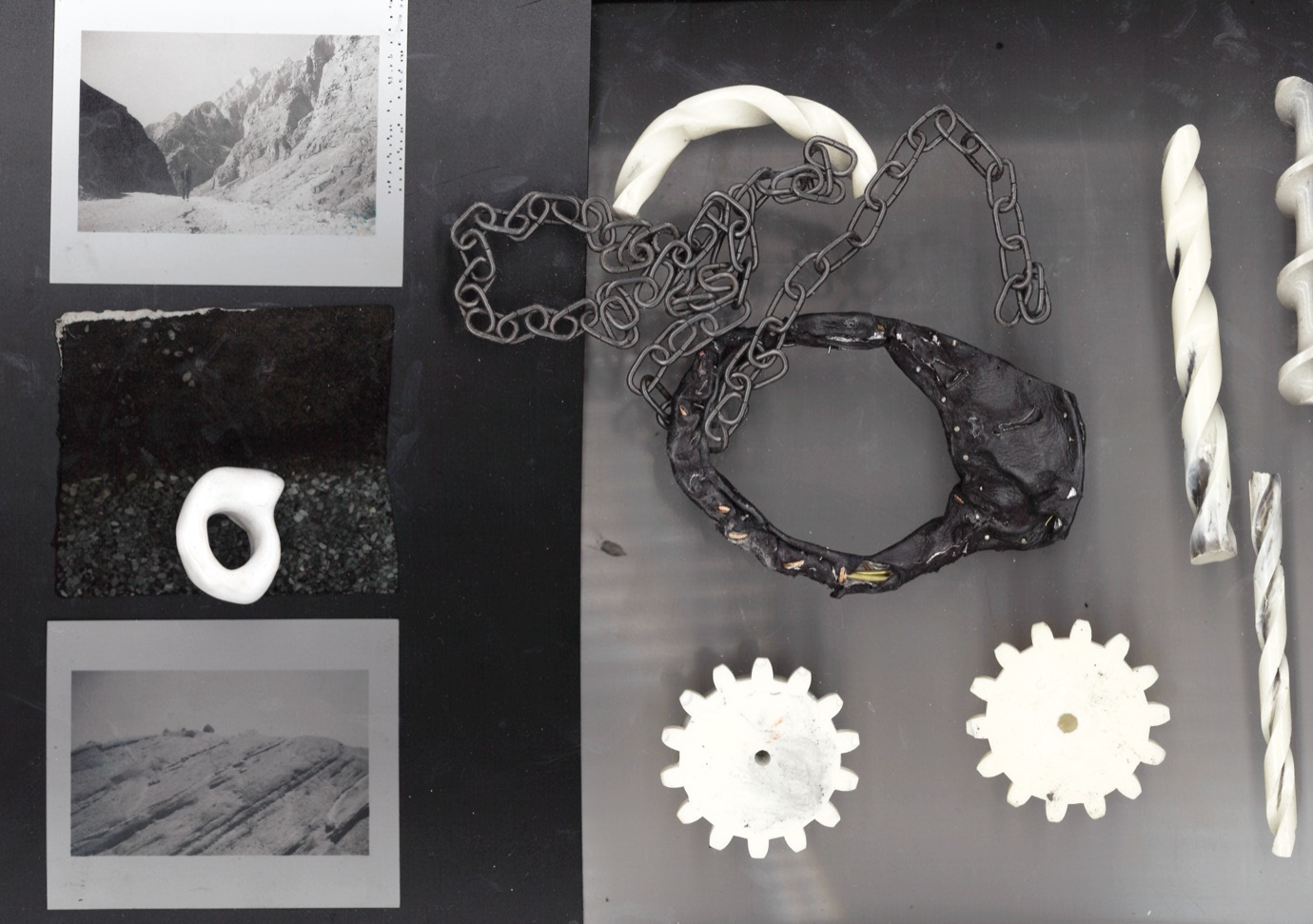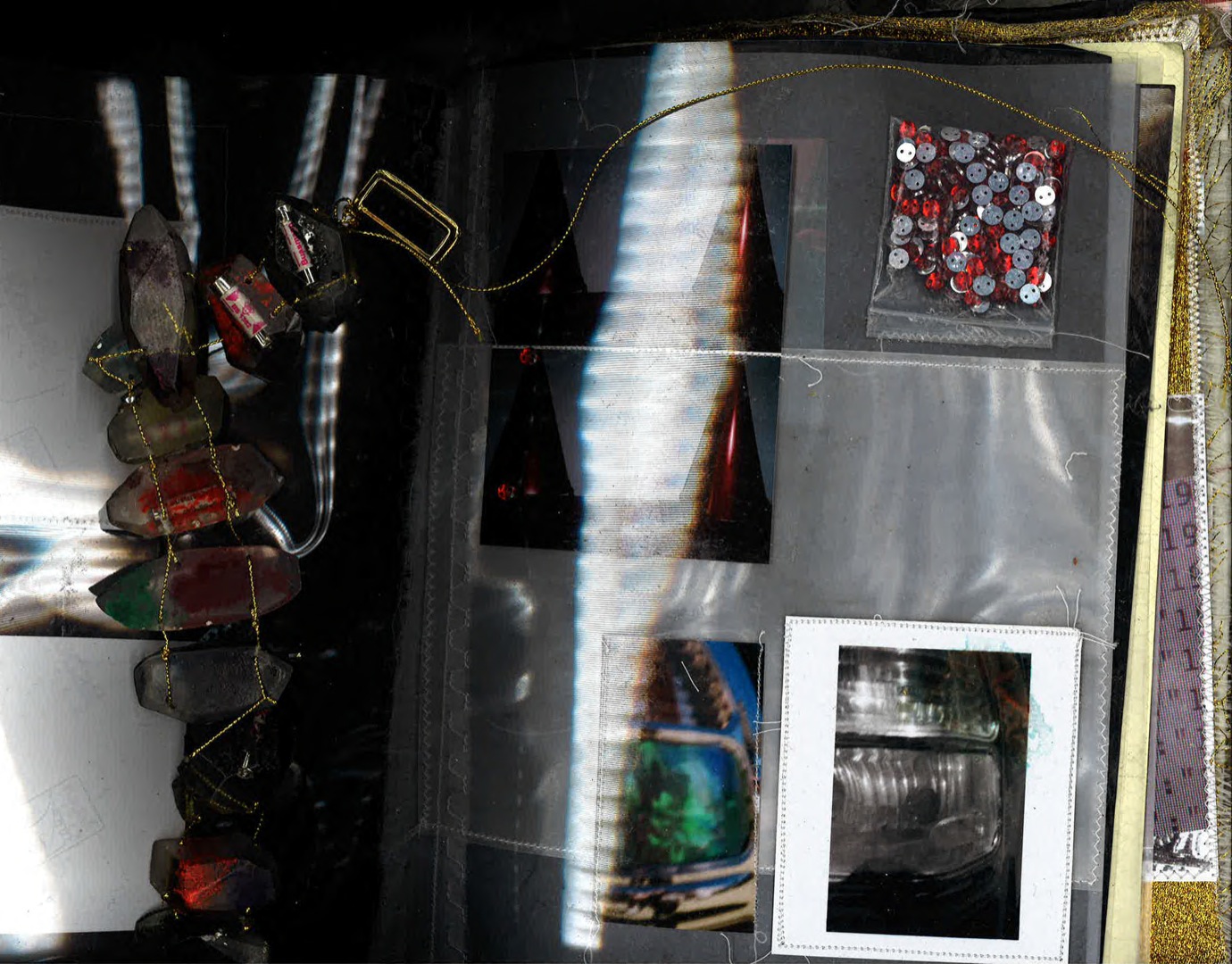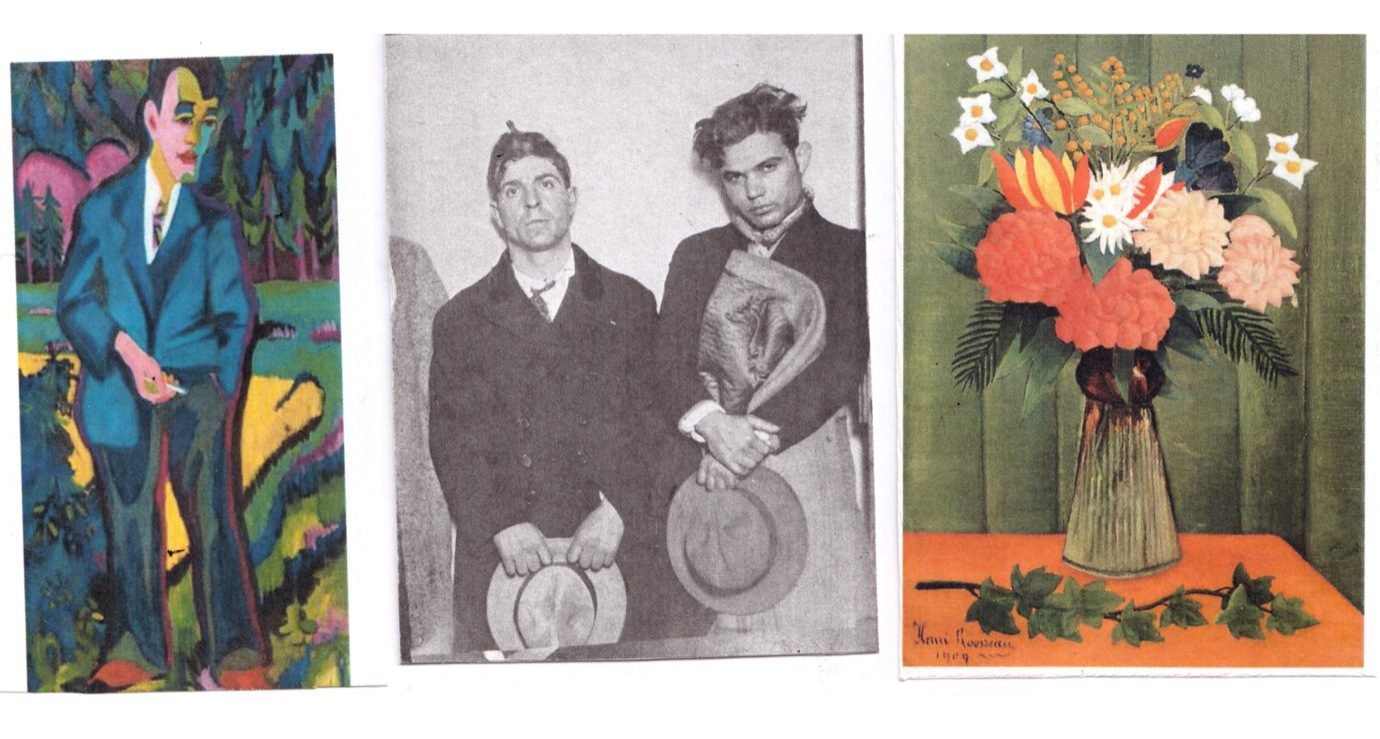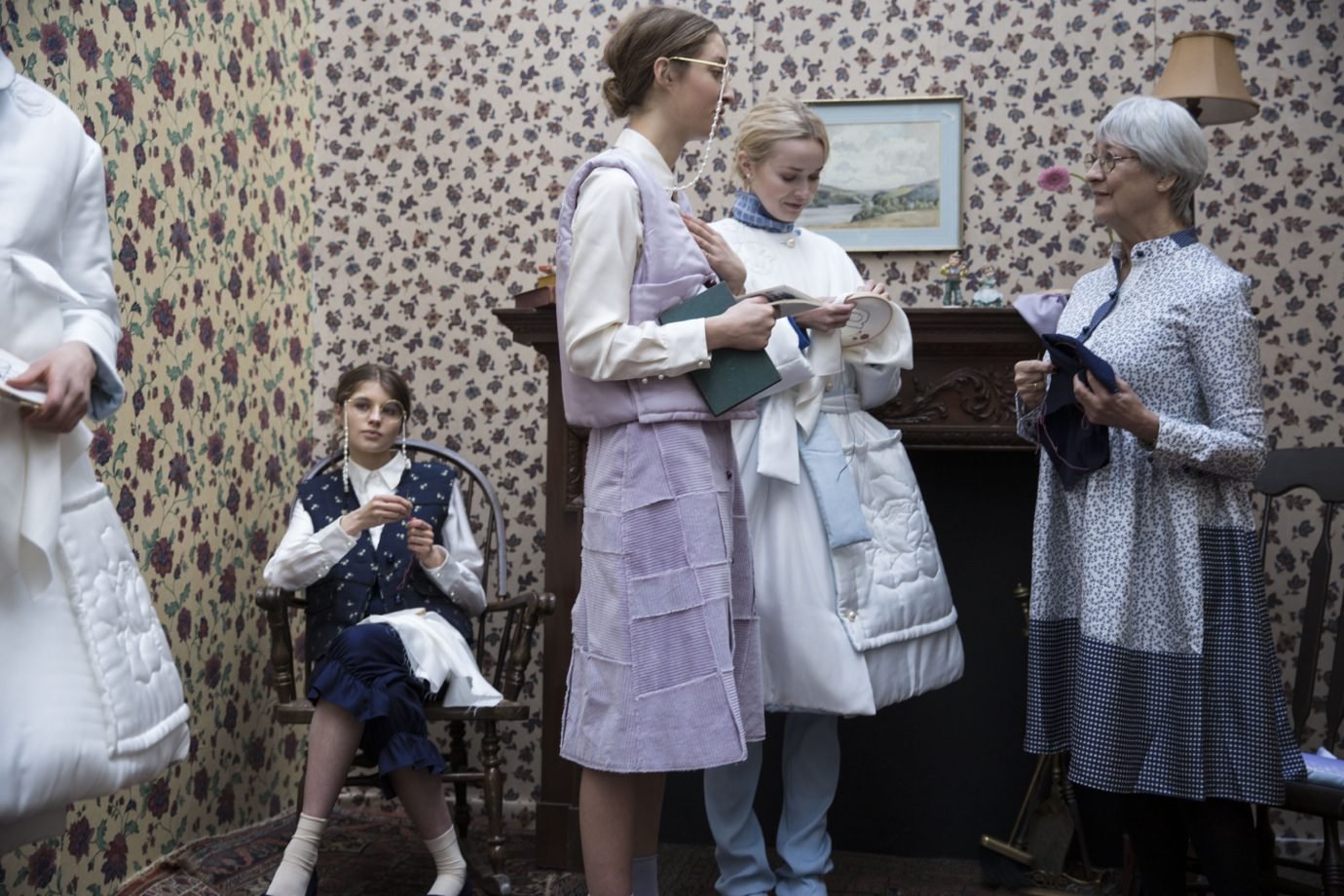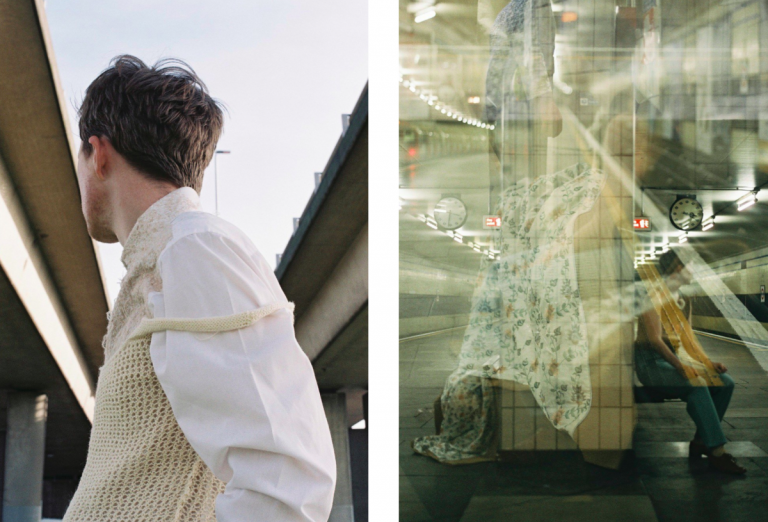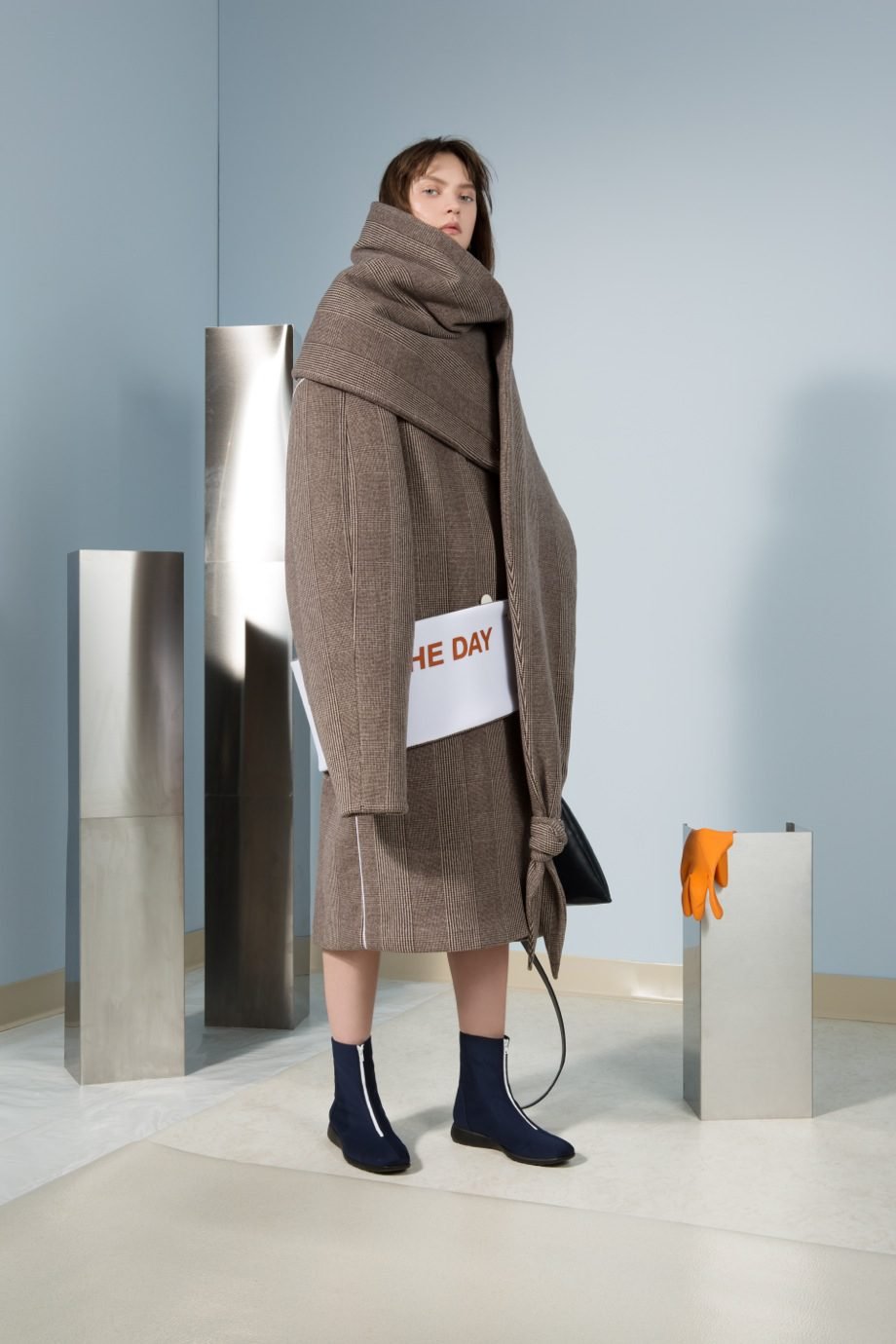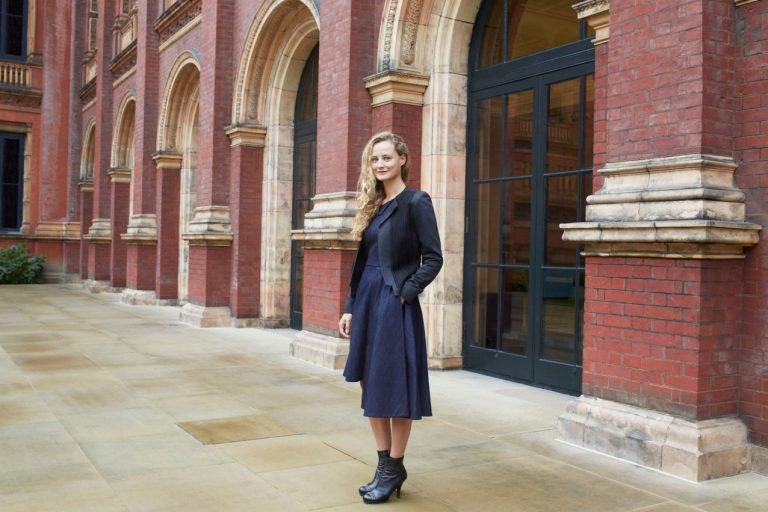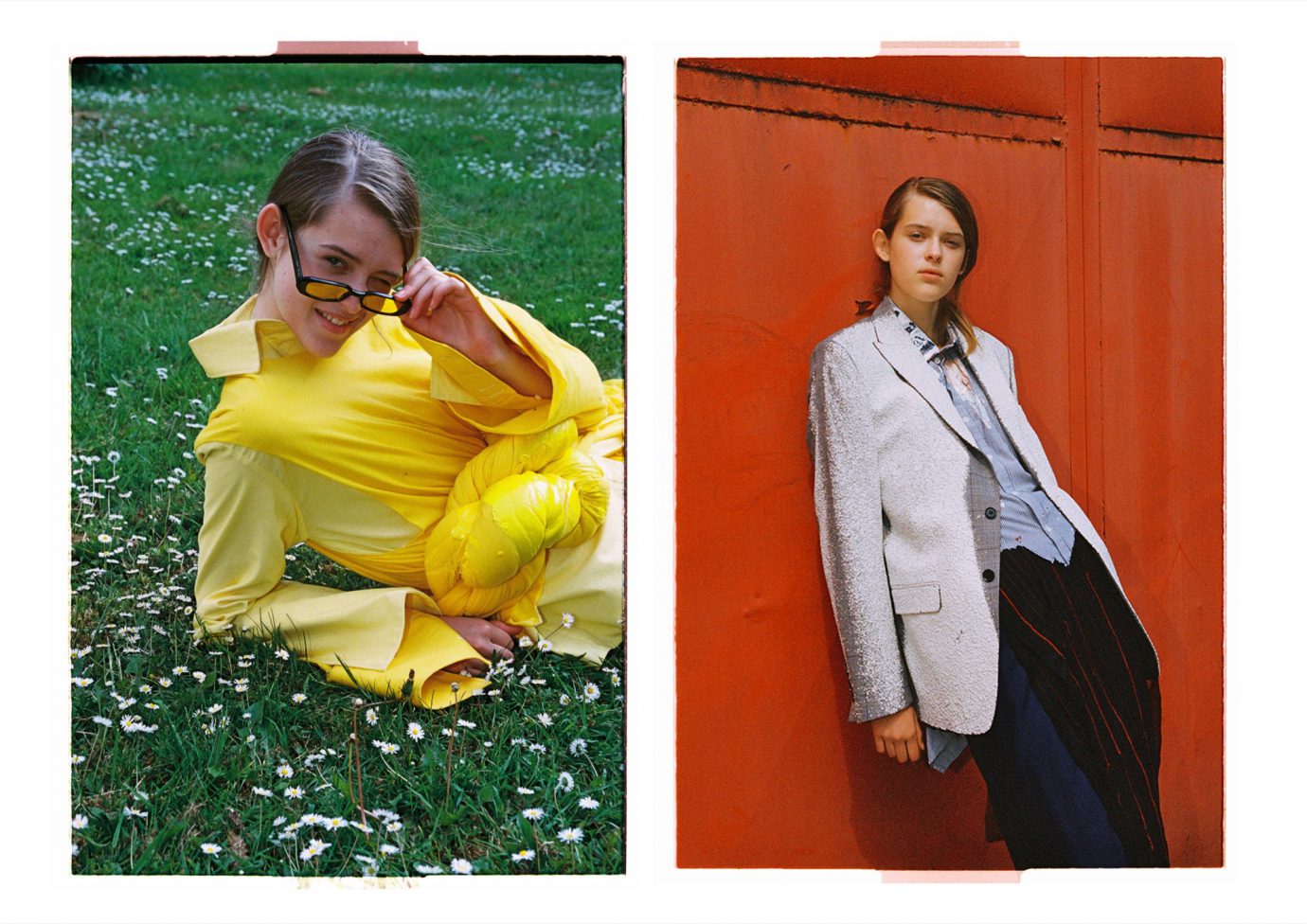When she was younger, her high-school teachers frowned upon the idea of her going to an art school, which only sharpened her resolve. She never wanted to be a jewellery designer, thinking it was a too restrictive, narrow-minded field. This changed swiftly in her first year of foundation at CSM where she learned to think about jewellery as “experimental sculpture”. For Colombe, jewellery is art. Her thought process is that of an artist and her jewellery a way of expressing ideas about time, memory and the human body. She wants to push the “illusionary” boundaries between different creative fields, through her own work and by collaborating with other artists and designers. She talks with a light French accent, occasionally tripping over words as her mind wants to say more than her mouth can handle.
Her own creative process is an explosion of energy. She usually starts her projects with a selection of random objects, combining them in different ways. One idea rapidly turns into ten and soon she’s running around the craft studios like a five-year old on Christmas morning. Her work is an exploration of those multiple possibilities, rather than one finished product. This makes the process just as important as the product. When technicians advise her on how to craft a piece, she’ll usually turn it down and go for a technique that’s “faster, more exciting or simply more fun”.

